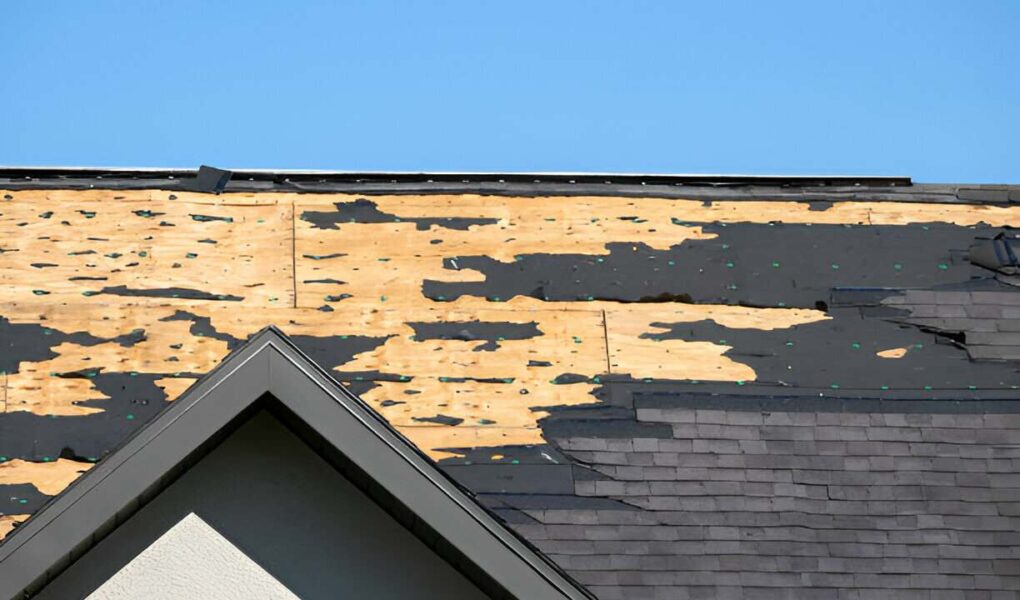Replacing your roof is a significant home improvement project that can enhance your property’s value and protection. However, like any major renovation, it comes with its share of challenges. Understanding these potential hurdles can help you prepare and ensure a smoother roofing experience.
Let’s explore the most common challenges homeowners face during roof replacement and how to address them.
Weather Woes
Weather is one of the most unpredictable factors in roof replacement projects. Unexpected rain, snow, or extreme temperatures can delay the work and potentially expose your home to the elements. These delays can extend the project timeline and cause inconvenience to homeowners.
To mitigate weather-related issues, plan your roof replacement during a typically dry season in your area. Work with a roofing contractor who has contingency plans for sudden weather changes. Ensure they use proper protective measures, such as tarps, to shield your home from unexpected precipitation during the replacement process.
Hidden Structural Damage
Often, the full extent of roof damage isn’t apparent until the old roofing materials are removed. Contractors may discover rotted decking, compromised support structures, or other hidden issues that require additional repairs. These unexpected problems can lead to increased costs and extended project timelines.
To prepare for this possibility, include a contingency fund in your budget for unforeseen repairs. Discuss potential scenarios with your roofing contractor beforehand and ensure they conduct a thorough pre-replacement inspection. This proactive approach can help you anticipate and plan for possible structural issues.
Material Shortages and Delays
Supply chain disruptions can lead to material shortages or delays in delivery. This issue can significantly impact the project timeline, especially if specific or custom materials are required for your roof replacement. Delays in material availability can cause frustration and extend the period your home is vulnerable.
To address this challenge, order materials well in advance of the scheduled replacement date. Work with a reputable contractor who has established relationships with suppliers and can anticipate potential shortages. Consider having a backup plan or alternative material options in case your first choice is unavailable.
Noise and Disruption
Roof replacement is inherently noisy and disruptive to daily life. The constant hammering, removal of old materials, and foot traffic on the roof can be challenging for homeowners, especially those who work from home or have young children. This disruption can cause stress and inconvenience during the project.
To minimize the impact, communicate with your contractor about your daily schedule and any specific concerns. Consider temporarily relocating during the most disruptive phases of the project if possible. Inform your neighbors about the upcoming work to maintain good relations and manage expectations regarding noise levels.
Inadequate Ventilation Planning
Proper roof ventilation is crucial for the longevity of your new roof and the energy efficiency of your home. However, ventilation issues are often overlooked or improperly addressed during roof replacements. Poor ventilation can lead to moisture buildup, reduced energy efficiency, and premature aging of roofing materials.
To ensure adequate ventilation, discuss ventilation options with your roofing contractor before the project begins. Have them assess your current ventilation system and recommend improvements if necessary. Invest in quality ventilation solutions that complement your new roof and enhance your home’s overall performance.
Unexpected Cost Increases
Despite careful planning, unexpected issues can arise during roof replacement, leading to cost increases. These may include additional repairs, upgrades to meet current building codes, or changes in material prices. Unforeseen expenses can strain your budget and cause stress during the project.
To prepare for potential cost increases, set aside a contingency fund of 10-20% of the project’s total cost. Thoroughly review your contract and understand what is and isn’t included in the quoted price.
Maintain open communication with your contractor about any changes or additional work required, ensuring you receive detailed explanations and estimates for any extra costs.
Conclusion
Roof replacement comes with challenges, but preparation makes it smoother. Plan for weather delays, unexpected costs, material availability, and ventilation needs. Managing disruptions and budgeting wisely help ensure success. Partnering with a reputable contractor is key to a durable, long-lasting roof.




